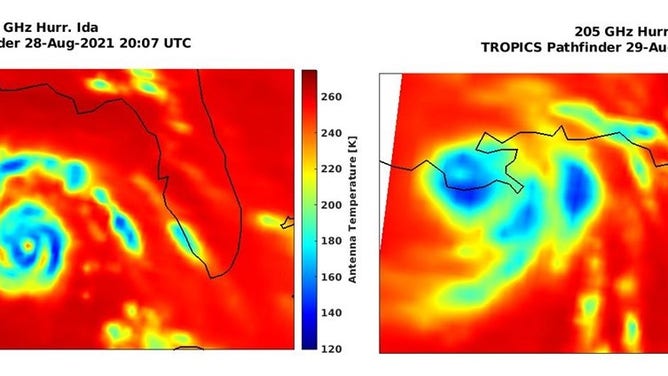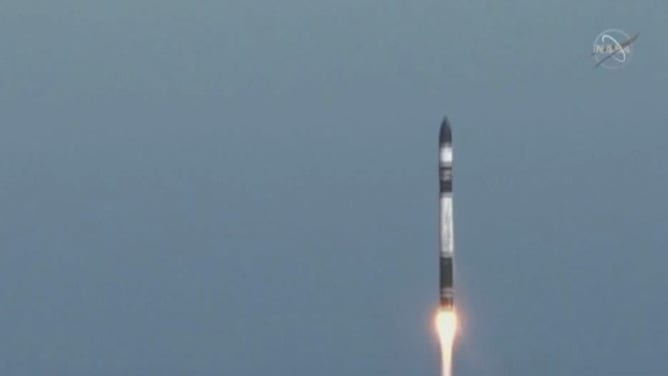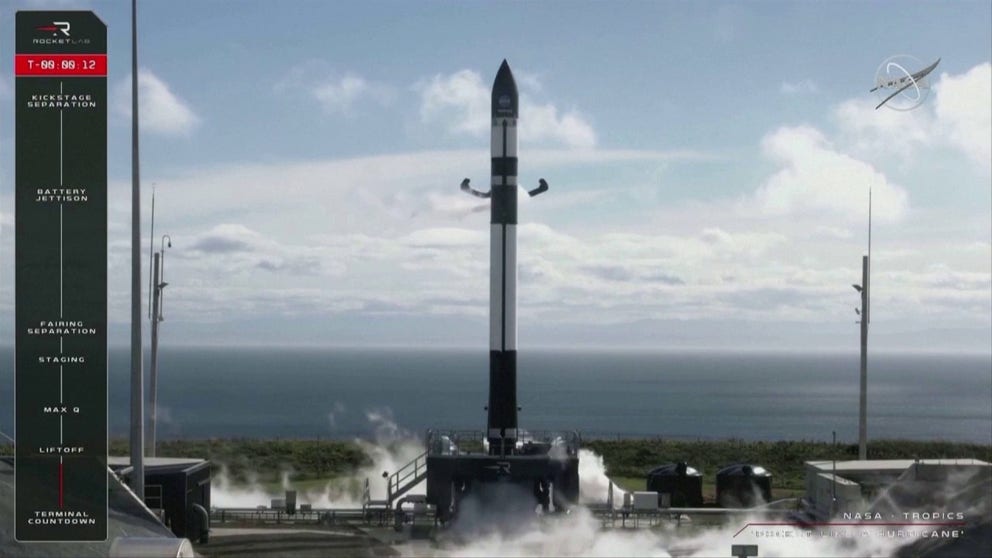Tropical cyclone-tracking satellites blasted into orbit just in time for 2023 hurricane season
NASA, with help from space firm Rocket Lab, has launched four small satellites over a three-week period as part of the TROPICS constellation that will help give researchers and meteorologists in-depth storm readings every hour.
Watch: Small weather satellites launched into space for hurricane hunting
NASA and partners successfully launched 2 small satellites into space as part of its TROPICS constellation. In 2 weeks, 2 more satellites will take off to create state of the art hurricane monitoring.
MAHIA, New Zealand – New tools to help improve hurricane forecasting blasted off this month, just in time for the 2023 hurricane season.
NASA, with help from space firm Rocket Lab, has launched four small satellites over a three-week period as part of the TROPICS constellation that will help give researchers and meteorologists in-depth storm readings every hour.
Rocket Lab titled the mission "Rocket Like a Hurricane."
TROPICS stands for the Time-Resolved Observations of Precipitation structure and storm Intensity with a Constellation of Smallsats. The series of four CubeSats, each about the size of a loaf of bread, each weighing about 10 pounds, will sit in low orbit, about 340 miles overhead.
5 DIFFERENT NAMES FOR HURRICANES AROUND THE WORLD
This enables a satellite to fly over a tropical storm or cyclone every 30 to 60 minutes. Data transfer would take about an hour. Current weather satellites can only collect data once every 6 hours, according to NASA.
"Providing more frequent imaging will not only improve our situational awareness when a hurricane forms," said Karen St. Germain, director of the Earth Science Division at NASA Headquarters in Washington. "The data will provide information to models that help us determine how a storm is changing over time, which in turn helps to improve forecasts from our partners like the National Hurricane Center and Joint Typhoon Warning Center."

Images of Hurricane Ida just before landfall with similar technology. The data retrieval technology is the most sensitive to scattering off of precipitation. The Tropical Cyclone's rainbands are clearly visible, which would be obfuscated under the clouds in VIS/IR images.
(NASA)
NASA: TROPICS MISSION CONTINUES DESPITE FAILURES 2 WEEKS INTO HURRICANE SEASON
The TROPICS constellation was originally designed to be 6 satellites. The first launch with space firm Astra in June 2022 failed to reach orbit, and both CubeSats were lost.
Astra announced shortly after that it was scrapping its smaller rocket program after a couple of failed launches. The result could have delayed NASA’s TROPICS launch of the remaining four satellites until after the 2023 hurricane season. NASA went back to bidding, choosing Rocket Lab.
NASA IS LAUNCHING A FLEET OF TINY SATELLITES TO STUDY THE TROPICS

Rocket Lab's Electron rocket taking off.
(NASA)
Finally, two of the satellites were launched into space from Mahia, New Zealand, on May 8. NASA established communication with one shortly after. The second kept scientists on the edge of their seats for about 5 hours before responding.
Mission "Coming to a Storm Near You" delivered the remaining two satellites on May 26, launching early that morning from New Zealand.
